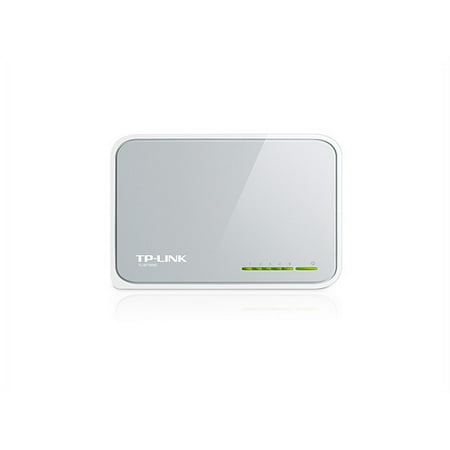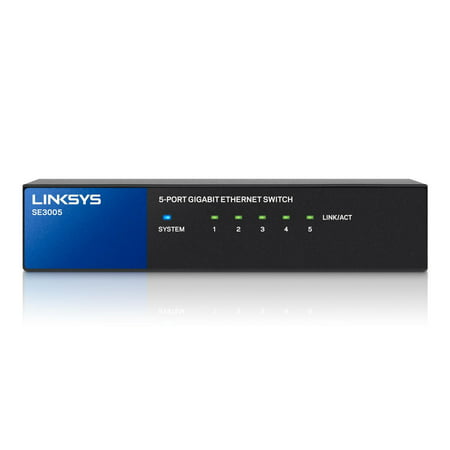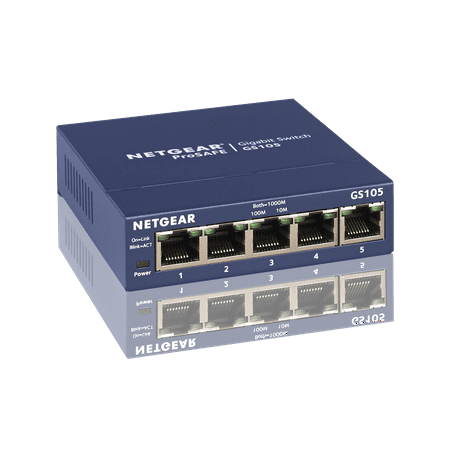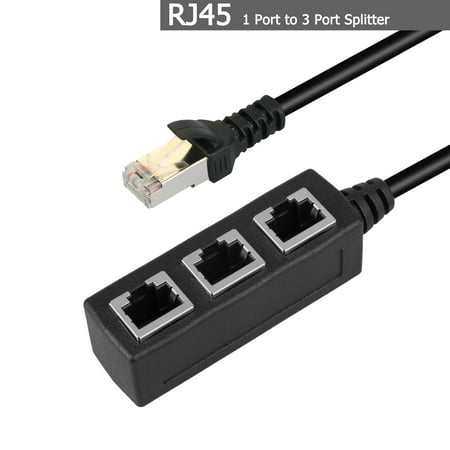Want to learn the difference between Ethernet switch, hub, and splitter? If yes, your search ends here on the right webpage. If you are short on Ethernet ports and are looking for the splitting Ethernet, of course, you will find multiple solutions like switch, hub, and splitter. Well, there is very little difference between them. Today, in this guide, we will walk through why Ethernet switch hub and splitter are different.
Ethernet switches, hubs, and splitters expand the signals and are specifically designed to connect computers and other devices. These devices are mainly used to develop and improve signals, home, and office networks. Each of these devices is different from the other and have their own merits and cons. You cannot say that Ethernet switches are better than splitters because it depends on the connections and use.
The Ethernet cables are too much in demand because they can be used in hard-wired Local Area Networks. As most routers have a limited number of ports, the need for Ethernet switches, hubs, and splitters increased. You can connect many computers and other network devices without the use of Wi-Fi in homes and offices. So, without further ado, let’s look at the Ethernet switch, hub, and port and why they are different from each other.
Ethernet Switch Vs. Hub Vs. Splitter-Overview
Ethernet Switch

An Ethernet switch is also known as a network switch that helps connect wired devices like printers and computers. It is also a fast speed networking device that contains several additional ports. The best thing about the Ethernet switch is that it can split one connection into multiple with limited interference.
Ethernet switches are easy to operate; connect one port with the router switch using the Ethernet cable. Now, you can join many Ethernet devices using the remaining ports. A single Ethernet port can act as multiple ports. With the duplex communication feature between devices, you can quickly send and receive signals simultaneously. This is an excellent way of easy and fast communication.
Ethernet switches are also quite affordable and come in a range of speeds and sizes from 5 to 52 ports. The next best feature of switches is to split the signals into smaller and less congested pathways. It means that the device receives the proper bandwidth range without the interference of the network traffic. In short, Ethernet switches offer faster networks to all the devices with limited or without interference.
How It Works Or Functions?
As you know, Ethernet switches are easy to operate. You need to connect the router with the Ethernet cable to the switch and connect other additional devices with ease. Ethernet switches manage data flow in the home, office, or other places by transferring the network packet to single or multiple devices.
Ethernet switches also enhance the network security of every single connected device and increase its efficiency. The network switch champions local area networks (LANs), mainly medium to large size local area networks.
Benefits Of Ethernet Switch
- Ethernet switches are durable and can save up to 80% of energy.
- It comes with 5 to 52 ports.
- It’s a plug and plays feature; no extra tools or software is required for installation.
Ethernet Hub

Ethernet hub is quite similar to an Ethernet switch that helps in connecting multiple Ethernet devices. Like Ethernet switches, hubs connect with the router via a single cable that splits numerous ports from one connection. Yes, Ethernet hubs are connecting with multiple devices, but it acts as a single network segment. The connected devices produce more available connections and repeat the network traffic that is received.
Like Ethernet switches supports duplex communication, Ethernet hub helps half-duplex communication. It simply means you cannot send and receive data at the same time. It results in collisions and data hold-ups. Compared to switches, the Ethernet hub decreases the connectivity speed and produces more interference between devices and networks.
Ethernet hubs are more affordable than Ethernet switches, but they are not in trend like switches. But for connecting some applications, an Ethernet hub is required. Ethernet hub cannot restrict port traffic and allow the device to view all traffic sent over the network.
As Ethernet Hub results in high interference between traffic, that’s why it is not the ideal gadget for expanding networks. Also, you cannot run multiple devices simultaneously because it results in data collisions, slow connections, and wasted bandwidth.
How It Works Or Functions?
As you know Ethernet hub also has several different ports that are used to connect LAN devices. Ethernet hubs are easy to operate. When the network data package reaches the port, it automatically copies to other ports so that the segments can see all the network packets of LAN.
Nowadays, Ethernet hubs are replaced by Ethernet switches because they are traditional and have become obsolete. But still, Ethernet hubs are used in older or specialized applications.
Benefits Of Ethernet Hub
- Ethernet hubs are the best energy-efficient source in the market.
- You can connect up to five devices at the same time.
- It is very silent while using
- It’s a plug and plays feature
- It comes with excellent warranty options
Ethernet Splitter

If you want to reduce the cable mess from walls and floors, an Ethernet splitter is an ideal option for you. Ethernet splitters are used to divide a network connection. It works with the coaxial cable transmission system and splits one cable into two. As the name said, Ethernet splitters allow you to run a single cable on the walls and floors but still want two cables connecting the device.
Ethernet splitters are used in pairs because it converts two wires into one while splitting connections. Ethernet splitters are used to reduce the wires, but it takes advantage of the scenario and reduces the output from 1000Mbps to 100Mbps.
How It Works Or Functions?
You may think that a splitter is an excellent option from switch and hub, but I suppose you might be wrong because it decreases the data transfer speed connected via Ethernet. The best thing is that splitters do not need any power supply like switches and hubs.
Splitters are only used to reduce the number of wires running between rooms in a home or office set up. Splitters have many drawbacks; that’s why the switch is always the best option.
Benefits Of Ethernet Splitter
- Ethernet splitters are easy to operate
- Can divide single cable into two outputs
Ethernet Switch Vs. Hub
If you have a small number of devices and small networks or users, an Ethernet hub is an ideal option because it deals with network traffic without disturbance. But if your network is more extensive, it’s advisable to go for an Ethernet switch for tremendous and fast network traffic.
If you have busy or home networks that experience a large amount of traffic due to multiple computers connection, consider a network switch is a great deal. Or, if you have a small family, it’s better to go for an Ethernet hub that connects personal computers and is the most affordable way for home. If you enhance the performance in the network Ethernet switch is recommended. This shows that an Ethernet switch is a better alternative than an Ethernet hub. So, instead of using a hub, use the 8-port switch for better connections.
Ethernet Switch Vs. Ethernet Splitter
As you know Ethernet switch requires power input to divide signals while an Ethernet splitter does not require power input. Also, the Ethernet switch is a high-networking device while the splitter divides single connections into two.
Ethernet switch easily connects the different devices like printers, computers, and even gaming consoles so you can enjoy high-speed. On the other hand, an Ethernet splitter eliminates the need for multiple cables.
Ethernet Switch Vs. Hub Vs. Splitter-Comparison Table
| Factors | Ethernet Switch | Ethernet Hub | Ethernet Splitter |
| Network Speed | Fast and high-speed | Average speed | Low speed |
| Number of Ports | 8 | 5 | 2 |
| Emery Efficiency | Better | Good | Poor |
| Uses | Suitable for large and multiple devices | Good for small setups | Suitable for connecting two devices in the home to clutter wires |
| Plug and Play | Yes | Yes | No |
Wrap Up
So, here is the guide ends for Ethernet switch vs. hub vs. splitter. Each of these devices has its pros and cons. For long distances and multiple devices, an Ethernet switch is an ideal choice. While for a small area, an Ethernet splitter is a good choice.
That’s all for now, and thanks for staying with us. We hope now you can understand the difference between Ethernet switch, hub, and splitter. Do follow us for the latest information and keep in touch for new updates.









